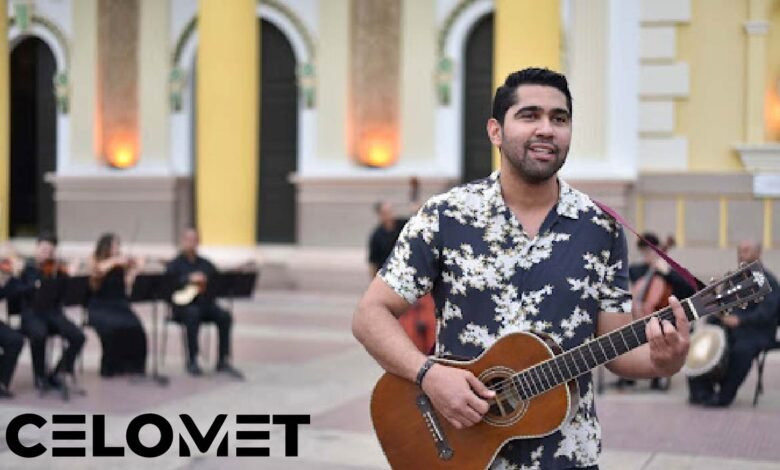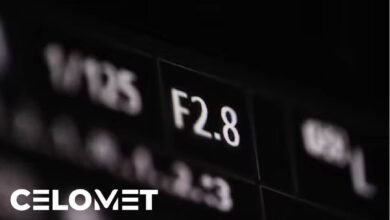Caibo Simon Toto Bethzart: Full Story and Meaning

Introducing Caibo Simon Toto Bethzart: A Name, A Movement, A Mystery
The term Caibo Simon Toto Bethzart is not just a name—it is a multi-layered symbol that merges the worlds of music, innovation, philosophy, and modern digital culture. Over the past few years, this phrase has begun to generate significant attention across Latin America and other regions, capturing curiosity from fans, creatives, technologists, and educators alike.
But what does it really mean? Is it a person? A collective? A method? The answer is all of the above. Caibo Simon Toto Bethzart represents a fusion of artistic vision and cultural evolution. It is deeply rooted in Latin musical tradition yet ventures boldly into the realms of interdisciplinary creativity and intellectual experimentation.
This article serves as an expansive, highly detailed, and fully informative guide to the term Caibo Simon Toto Bethzart, designed to help readers understand its full meaning and wide-reaching impact across multiple sectors.
The Origins: Who—or What—is Caibo Simon Toto Bethzart?
Etymology and Semantic Breakdown
The name Caibo Simon Toto Bethzart is made up of four distinct components, each contributing its own meaning to the whole. “Caibo” is a Venezuelan musical project originally formed by two artists—Simón and Beethzart—known for combining pop, folklore, and soul influences into a genre-defying sound. “Simon” refers to Simón Ruiz, one half of the musical duo, known for his poetic lyrics and compositional depth. “Toto” is the nickname of Beethzart Escalona, the other member of the duo, who is widely praised for his emotional delivery and vocal talent. Finally, “Bethzart” appears to be a unique stylized version of Beethzart’s name that has evolved to signify both a persona and a broader creative philosophy. Collectively, the full term can be seen as representing not only two musicians but also the ethos they built—one that embraces fusion, cultural identity, and artistic authenticity.
Historical Emergence
The story of Caibo Simon Toto Bethzart begins in Venezuela, where Simón and Beethzart started their journey as part of the group Caibo. Their music gained traction in the early 2010s, resonating with listeners due to its heartfelt lyrics, genre fusion, and strong regional identity. However, as their audience grew, so did the layers of their influence. Beyond their success in music charts and performances, the concept of “Caibo Simon Toto Bethzart” began to evolve into a larger framework of creativity and innovation. It became associated with not just songs, but methodologies, collaboration models, and even educational and entrepreneurial principles. Through a combination of public performances, viral content, and philosophical interpretations, the name expanded beyond the confines of its musical origins.
Caibo Simon Toto Bethzart: The Artist, the Innovator, the Influencer
Early Life and Background
Both Simón Ruiz and Beethzart Escalona come from Venezuela, where cultural diversity and rich musical traditions greatly shaped their early influences. Simón was drawn to poetic expression and introspective songwriting from an early age, while Beethzart was influenced by powerful vocalists and traditional Latin balladry. Their upbringing in a country marked by both beauty and struggle provided fertile ground for emotionally resonant music. Through their families, communities, and educational journeys, both artists absorbed a wide variety of artistic influences—from Afro-Caribbean rhythms to Western pop and classical forms. These diverse inputs eventually became the foundation of their creative output as Caibo.
Rise to Fame
The duo’s early breakout came with their ability to authentically merge emotional depth and commercial appeal. Songs like “La Vida es Bella” and “Te Llevo en Mi Voz” captured the hearts of fans across Venezuela and beyond. Their music was not only catchy but meaningful—addressing themes of love, cultural pride, self-discovery, and resilience. Caibo, Simon, and Beethzart performed at major festivals, earned awards and nominations, and collaborated with well-known artists in Latin America. However, as their careers matured, each artist began exploring individual directions, eventually leading to a creative divergence that would redefine their paths and expand the term “Caibo Simon Toto Bethzart” into a broader cultural identity.
Soundscapes and Soul: The Music of Caibo Simon Toto Bethzart
Signature Style and Genres Blended
The hallmark of Caibo Simon Toto Bethzart’s music is its ability to blend various genres into a seamless and original sound. Their work features elements of Latin pop, folk, soul, reggaeton, acoustic ballads, and even jazz and flamenco. The percussion-driven arrangements, heartfelt lyrics, and harmony-rich compositions made their songs feel deeply personal yet universally accessible. More importantly, their music maintained a clear connection to Venezuelan identity, incorporating traditional instruments and rhythms in a modern framework. This ability to respect roots while innovating created a signature style that resonated across age groups and national boundaries.
Major Songs and Albums
Some of the most influential songs under the Caibo Simon Toto Bethzart name include “Pa’ Que Suene,” “La Bendición,” and “Un Viaje.” Each of these tracks showcases a different side of their artistic range—from upbeat celebration to introspective reflection. “Canta al Corazón” is another example of their lyrical brilliance, tackling emotional vulnerability in relationships with both honesty and grace. These songs have collectively garnered millions of streams and are often cited as anthems for fans who value substance as much as style. Their albums serve not just as collections of music, but as curated experiences that tell a story from beginning to end.
Live Performances
The live performance experience of Caibo Simon Toto Bethzart is often described as a mixture of concert and cultural celebration. Whether in a large stadium in Bogotá or a more intimate venue, the duo always emphasized connection, energy, and storytelling. Acoustic interludes, audience interaction, and emotional transparency transformed each show into a shared journey. Fans frequently describe the experience as “spiritual,” citing moments where the crowd sings in unison, creating an emotional resonance that goes beyond entertainment. These performances helped solidify their reputation as more than just musicians—they became messengers of feeling and identity.
Caibo Simon Toto Bethzart as a Framework: Beyond the Music
Philosophical Underpinnings
As its reach expanded, Caibo Simon Toto Bethzart became more than just a musical brand. It evolved into a form of pragmatic idealism—the belief that beautiful, transformative things can be built through structured creativity and heartfelt collaboration. The term began appearing in academic, artistic, and entrepreneurial discussions as a reference to a model of interdisciplinary innovation. Influences from systems theory, design thinking, and cultural theory began to shape this identity. The idea of “informed improvisation”—responding fluidly to changing circumstances while staying grounded in core values—became central to the framework.
Key Methodological Principles
At the heart of the Caibo Simon Toto Bethzart model are five core principles:
-
Integrative Thinking: Combining diverse ideas from unrelated disciplines to generate innovation.
-
Adaptive Implementation: Adjusting strategies in real time based on feedback and environment.
-
Collaborative Development: Emphasizing shared ownership of creative or professional outputs.
-
Accessible Communication: Making complex concepts simple and relatable to broader audiences.
-
Iterative Innovation: Viewing each effort as part of a cycle of continuous improvement.
These principles are not abstract—they are applied in education, business development, digital design, and more.
Where Caibo Simon Toto Bethzart Lives Today: Beyond the Stage
In the Creative Industry
Creative professionals—especially in design and multimedia—have started using the Caibo Simon Toto Bethzart approach to structure collaborative projects. Music producers, video directors, and visual artists reference it as a flexible framework that fosters cross-functional communication and deeper emotional impact. It encourages project teams to align around a shared purpose while embracing a diversity of skills and perspectives.
In Education
Many forward-thinking educators have adopted the Caibo Simon Toto Bethzart model in project-based learning environments. By encouraging students to think across disciplines and reflect on both process and outcome, it helps build not just knowledge but wisdom. Institutions in Latin America and the U.S. have begun offering workshops and certificates inspired by its principles.
In Business and Tech
Startups and tech firms are using Caibo Simon Toto Bethzart ideas to improve team dynamics, product development, and strategic planning. The adaptive and collaborative aspects are particularly useful in Agile workflows, product innovation, and user experience design.
In Online Betting and Gaming
Interestingly, terms like “Simon Toto” and “Bethzart” have surfaced in gaming and betting culture. In this context, they are used to describe smart betting strategies and intuitive systems for decision-making. While their use here may be more metaphorical, it reinforces the concept’s wide appeal.
Caibo, Simon, Toto Beethzart, and Anais Vivas: The Separation That Shaped a Generation
The Rise and Peak of Caibo
During their peak, Caibo was hailed as one of the most innovative and emotionally resonant acts in Latin America. Their harmony, authenticity, and lyrical depth built a devoted fan base.
The Breakup and Its Fallout
Eventually, artistic differences and individual goals led to a professional separation. Anais Vivas—a classically trained singer who had collaborated with both artists—was often mentioned in media coverage, though no official narrative ever confirmed her as a reason for the split. The emotional impact on fans was significant, but it also led to a burst of creativity as both artists pursued solo ventures.
Life After Caibo
Simon focused on folk-pop and introspective songwriting, while Beethzart leaned into solo balladry and emotionally rich performances. Anais Vivas continued to grow her presence in both classical and pop circuits. The separation proved to be a catalyst for individual reinvention.
Legacy and Influence: Why Caibo Simon Toto Bethzart Matters
Cultural and Social Impact
The story of Caibo Simon Toto Bethzart is ultimately about representation, resilience, and the power of cultural roots. Their music helped affirm Afro-Caribbean and Venezuelan identities in a globalized music industry.
Influence on New Artists
Younger musicians and creatives often cite Caibo as inspiration—not just for their sound, but for their attitude toward collaboration, experimentation, and purpose.
Misunderstandings, Myths, and Realities
Common Misconceptions
Some believe Caibo Simon Toto Bethzart is a fictional character, or a concept only tied to gambling. In truth, it is a complex but real-world fusion of people, philosophy, and practice.
Criticisms and Debates
As with any innovative model, critics have questioned its lack of formal structure or academic backing. Others debate whether its mainstream popularity dilutes its deeper message. However, its impact continues to grow.
What’s Next for Caibo Simon Toto Bethzart?
Looking forward, expect more genre-blending albums, international collaborations, and even expansion into educational and digital innovation spaces. The artists behind the name show no signs of slowing down.
What You Can Learn from Caibo Simon Toto Bethzart
-
Creatives can embrace genre fusion and authenticity.
-
Entrepreneurs can apply adaptive, people-first innovation models.
-
Educators can build more engaging and interdisciplinary learning frameworks.
Explore More: Books, Articles, Interviews, and Playlists
-
Official Spotify playlists
-
Interviews on Latin music podcasts
-
Cultural analysis essays in regional publications
-
Video essays on YouTube covering the Caibo phenomenon
Final Thoughts: A Living Symbol of Creativity and Transformation
Caibo Simon Toto Bethzart is more than a name—it’s a beacon of what can happen when artistic sincerity, interdisciplinary thinking, and cultural identity come together. It continues to evolve as a concept, a method, and a movement, shaping how we create, connect, and inspire. Whether you’re a fan, a scholar, or a creator, this is a name worth knowing, exploring, and remembering.
FAQs
1. Who is Caibo Simon Toto Bethzart?
Caibo Simon Toto Bethzart refers to a multifaceted concept combining the identities of Venezuelan musicians Simón Ruiz and Beethzart “Toto” Escalona, known collectively as Caibo. Over time, the term has expanded to represent not only their music but also a broader interdisciplinary framework that blends cultural expression, innovation, and creative collaboration.
2. What kind of music does Caibo Simon Toto Bethzart produce?
The music of Caibo Simon Toto Bethzart blends Latin pop, Afro-Caribbean rhythms, acoustic ballads, urban beats, and folk influences. Their sound is emotionally rich and culturally rooted, often addressing themes like love, resilience, identity, and social unity.
3. What does the name “Caibo Simon To to Bethzart” mean?
The name is a combination of elements: “Caibo” refers to the original music duo, “Simon” is Simón Ruiz, “Toto” is the nickname of Beethzart Escalona, and “Bethzart” is a stylized version of Beethzart’s name. Together, it represent a symbolic blend of artistic identity, philosophy, and creative methodology.
4. Why did Caibo separate, and what is the role of Anais Vivas in the story?
Caibo’s separation stemmed from creative differences and the desire for individual artistic growth. While Anais Vivas collaborated with both members and was linked to the narrative, no confirmed reports suggest she caused the split. Instead, all three artists continued to grow in their respective careers post-separation.
5. How is Caibo Simon To to Bethzart used outside of music?
Beyond music, Caibo Simon Toto Bethzart has become a model for creative collaboration and interdisciplinary problem-solving. Its principles are applied in education, design, business innovation, and even online gaming strategies, emphasizing integrative thinking, adaptive systems, and community-driven development.




